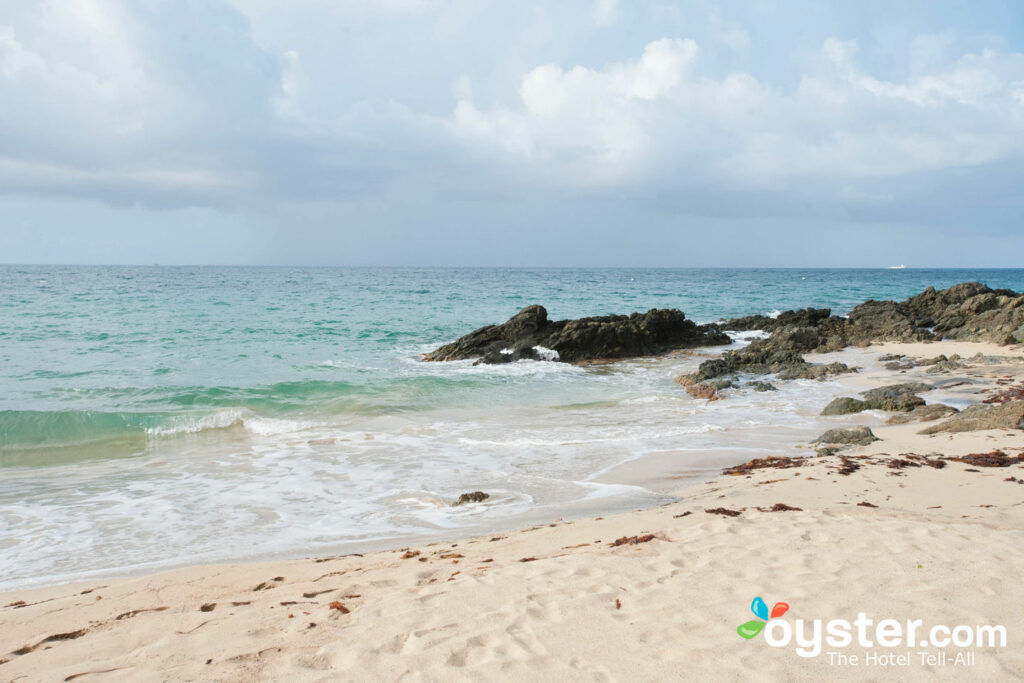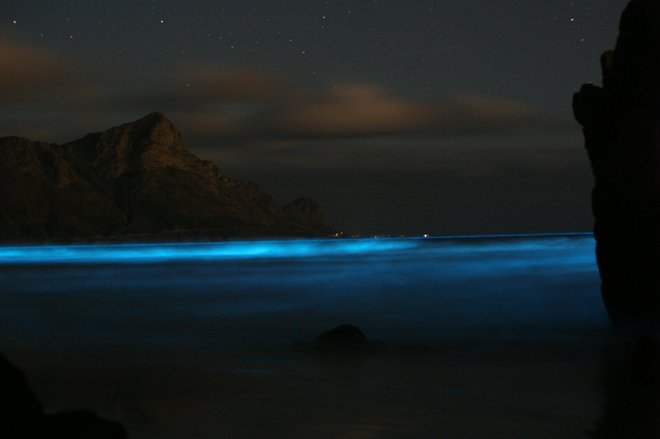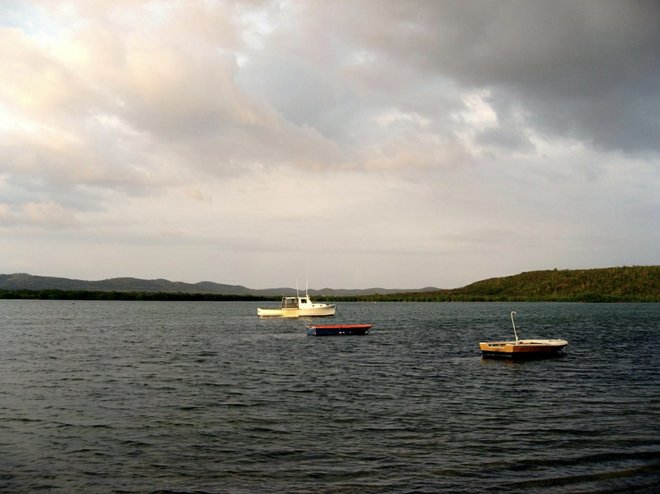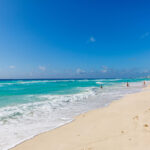
You see that beach there? Well, that pretty strip of sand was nowhere near where this story begins, nor was was my room with the balcony and the sound of crashing waves below. Every luxe trapping at the W Retreat & Spa - Vieques Island is over the hills, on the other side of the island from Vieques' famous bioluminescent bay.
Instead, we waited in a parking lot, towels wrapped tightly around our exposed limbs, arms tucked inside of our t-shirts. The mosquitoes were out and they were hungry. But the warning from Abe's Snorkeling & Bio Bay Tours was stern: Do not put any bug spray or chemicals on your skin before visiting the bioluminescent bay. And so there we sat, being eaten alive while waiting for our ride to the glowing waters of Vieques' bioluminescent Mosquito Bay. It's one of the island's most famous sights, and after foolishly skipping my chance to see it on a visit to Vieques 10 years earlier, I wasn't going to miss my second shot.
The thing is -- for a moment there -- the lights in Mosquito Bay went out. In 2014, according to the New York Times, the waters lost their bioluminescence for months before slowly coming back to life. At the same time, fear also set in: What if the bay never lit up again? It has happened elsewhere, and it could happen again in Vieques, even in what is considered the brightest of the world’s remaining bioluminescent bays.
Photo of bioluminescent waves courtesy of BMC Ecology.
Here’s a little science
for you: Bioluminescent bays exist because they’re filled with single-celled
organisms called dinoflagellates. While several thousand species of
dinoflagellates exist, only a fraction emit a split-second flash of light. In Mosquito Bay, the number of pyrodinium
bahamense in the water dwarfs almost every other bioluminescent bay on earth — according to researcher David Gruber and nature.org, there are at least 6,000 organisms per tablespoon of water. But these organisms rely on a delicate balance of topography, weather, water conditions, and surrounding
ecosystems — all of which are mutable in today’s changing climate.
As we kayaked away from shore, I expected to see Las Vegas-style lights bursting in the sea all around. Instead, all I saw was the bright white of the moon glinting off the wake of kayaks and the silhouettes of mangroves on shore. You see, almost every existing photo of bioluminescence — like the one above — are either doctored or taken using specialized time-lapse settings, placing outsized expectations on first-hand bio bay experiences. Still, I wondered, where was the light?
I paddled more, trying to suppress the feeling that it was all a sham. I recalled when I first visited Niagara Falls as a kid, expecting my jaw to drop in front of a towering, all-consuming cascade. In reality, they looked sort of squat and wide — fine enough, but not up to the spectacle I’d imagined. As we paddled to the middle of the bay, though, I started to notice trails behind my oar; trails that, at first, seemed like improbable flashes of white under the water’s surface, lingering just a moment too long, as if someone held a flashlight to the bubbles left in my wake.
In the center of the bay, we huddled our kayaks together to block the moonlight. There it was, like a hallucination — or the early on-set of certain mind-altering substances. I spun my oar in the water and clouds of blue flashed and disappeared, flashed and disappeared. It’s a blue unlike anything I’d seen before — a cross between sky, neon, and jay. Hushed gasps were audible all around. Kayakers quietly advised other kayakers on the best way glimpse the fleeting sight. Schools of fish left blue trails in their wake. I thought, “How is this real life?”
Photo of Mosquito Bay at daytime courtesy of dirt.
So what happened in 2014?
No one is really sure — and that alone is cause for alarm, especially on a small island in desperate economic shape. Pointing to a 2013 blackout in nearby
Fajardo, on the main island, researchers have come up with a few theories. According to The Atlantic’s citylab.com, the United States Department of
Natural Resources concluded that culprits may include cleared mangrove forests, construction
runoff, and strong storms. The trouble is, on an island desperate for any form of development — touristic or otherwise — economic survival may very well depend on building more
infrastructure, potentially leading to even more bio-bay blackouts.
For now, Vieques has
imposed safeguards that have kept Mosquito Bay stable for nearly two years. The
lights in the hills around the bay have been changed to minimize light
pollution, visitors are no longer permitted to swim in the water, everyone is
advised to keep all chemicals off of their skin before a visit, only licensed
companies may access the bay, and a real-time water-inspection station has been
installed. Still, the fear is real, and with these sensitive ecosystems disappearing without notice before, consider yourself warned — don’t put off visiting Mosquito Bay any longer than you already have.
Related Links:
- 7 Endangered UNESCO Heritage World Heritage Sites to See Before They’re Gone
- 5 Popular Spots Threatening to Limit Tourists (And Why That’s Okay)
- What It’s Really Like to Go on an Ecotourism Adventure in Puerto Rico
All products are independently selected by our writers and editors. If you buy something through our links, Oyster may earn an affiliate commission.



